With around 14.5 grams of protein per cup, chickpeas are a powerful, tasty way to boost your plant-based protein intake. Add fiber, vitamins, and minerals, and they become a true superfood. Pair them with grains for complete protein and enjoy this ancient, nutrient-packed staple in endless ways today!
Chickpeas Drawing
Credit Alberto Conde Kitchen in the Med
Share this article
Table of Contents
Origins
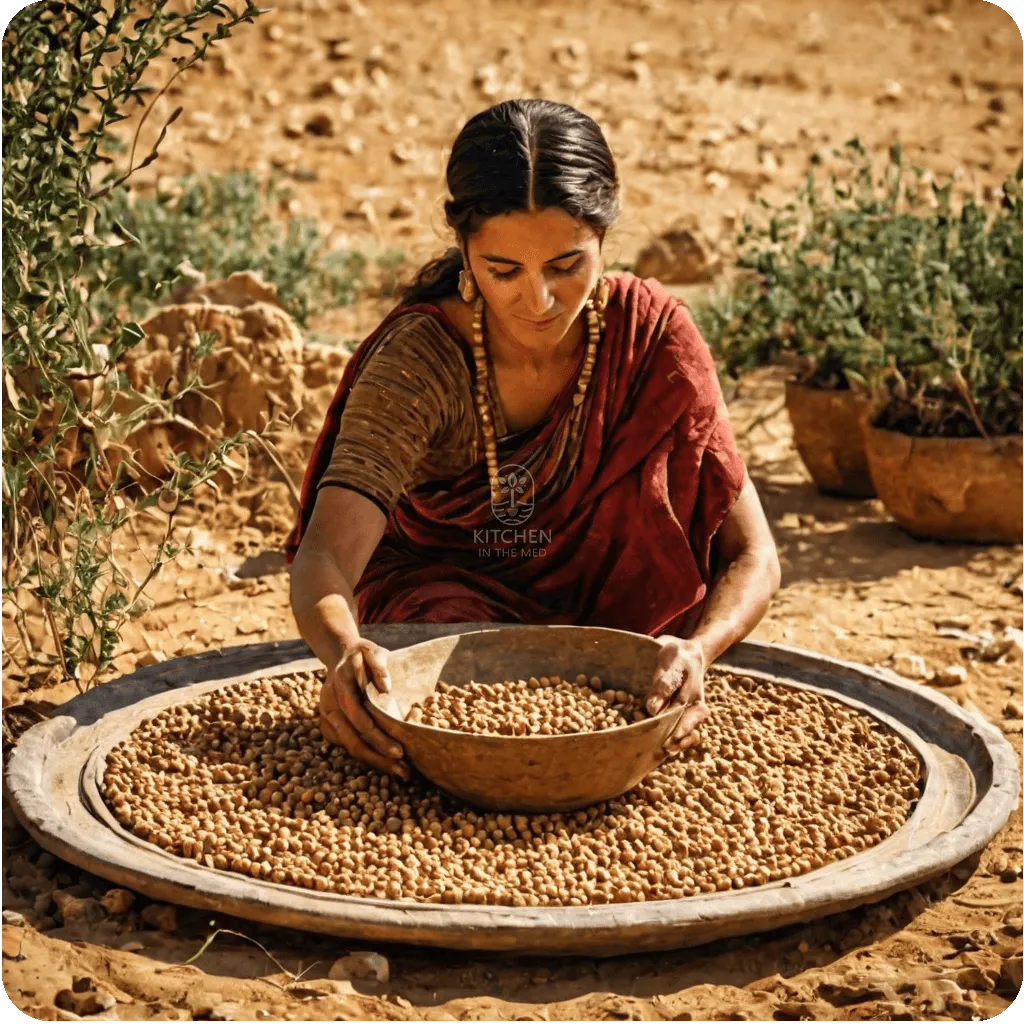
Babylonian Woman with Chickpeas Drawing
Credit Alberto Conde Kitchen in the Med
Chickpeas (Cicer arietinum L.) are among the earliest cultivated legumes, origin tracing back to the Fertile Crescent. Archaeobotanical evidence indicates their domestication around 7000 BCE in present-day southeastern Turkey. From this region, chickpeas spread to the Mediterranean, South Asia, and beyond, becoming essential to various cuisines and agricultural systems.
Some Chickpea Anecdotes
Ancient Roman Snacks: In Ancient Rome, roasted chickpeas were a popular street snack, sold by vendors much like peanuts today. They were also used as a filler in bread, adding nutrition to the bare-grain loaves typical at the time.
Pliny the Elder’s Praise: The Roman author Pliny the Elder mentioned chickpeas in his Natural History, noting their health benefits. Pliny said chickpeas promoted energy and vitality and encouraged people to incorporate them into their diets.
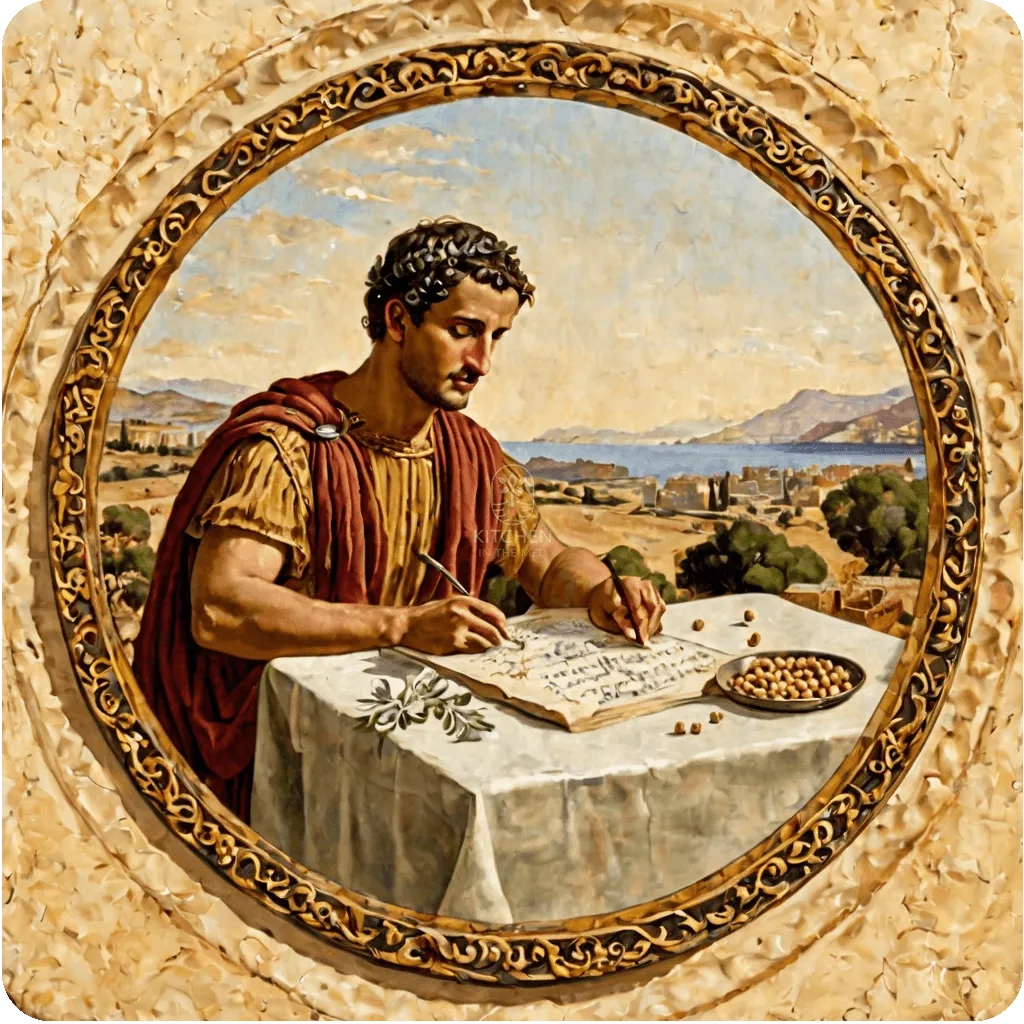
Pliny the Elder Writing About Chickpeas Drawing
Credit Alberto Conde Kitchen in the Med
Symbol of Humility in Ancient Egypt: Chickpeas were associated with humility and modesty. The Egyptian pharaoh Akhenaten, known for his monotheistic reforms, often included chickpeas in offerings to the sun god Aten, symbolizing a humble yet nutrient-rich gift.
Middle Ages and Religious Symbolism: Chickpeas were a staple protein source during Lent in medieval Europe. Their resilience and ability to thrive in hard climates made them popular.
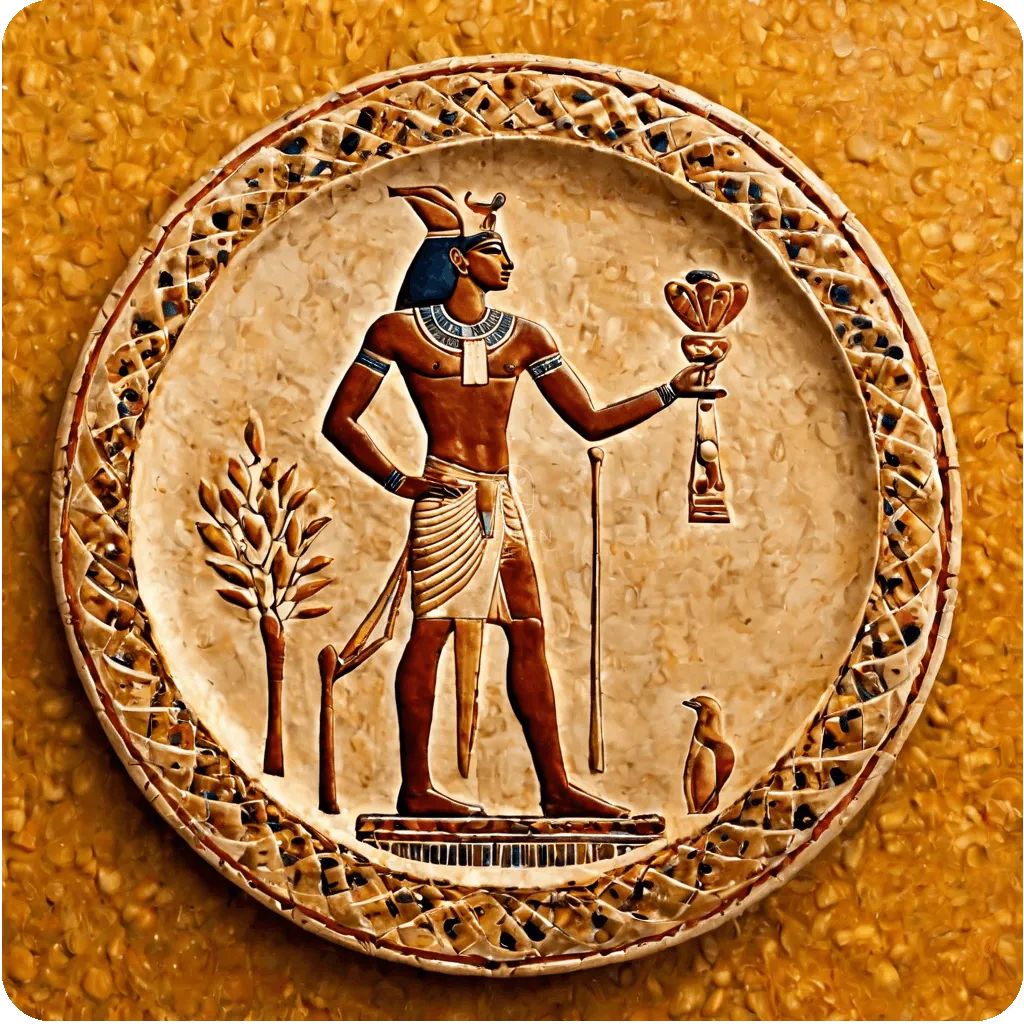
Egyptian Pharaoh with a Chickpea Offering
Credit Alberto Conde Kitchen in the Med
Origin of “Hummus”: Hummus comes from the Arabic term for chickpeas. The dish likely dates back centuries, with early recipes in medieval Arab cookbooks. Due to chickpeas’ nutritional density and easy availability, it became a culinary staple across the Middle East and the Mediterranean.
Chickpea in the New World: In the 16th century, Spanish and Portuguese explorers brought chickpeas to the Americas. They quickly adapted to the climate and became a valued crop in regions like Mexico and the American Southwest.
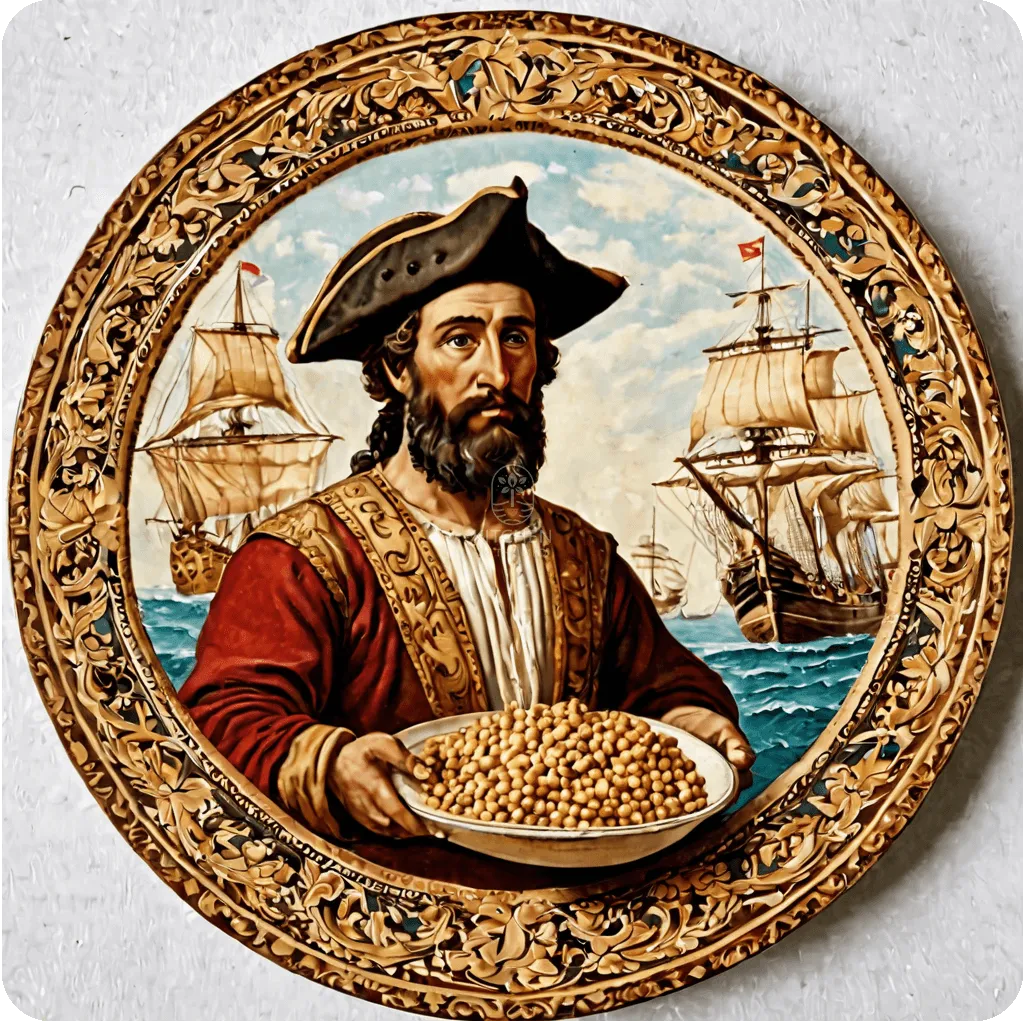
Spanish Settler Introducing Chickpeas to the New World Drawing
Credit Alberto Conde Kitchen in the Med
Nutrition & Health Facts
Chickpeas are also known as garbanzo beans. They provide around 14.5 grams of protein in a 1-cup serving.
They are a great option to increase your protein intake through plant-based foods.
Chickpeas are a source of dietary fiber, vitamins, and minerals. Their high fiber content aids digestion and helps maintain stable blood sugar levels.
As I read in “Crunchy Roasted Chickpeas” from Harvard School of Public Health, some studies showed that people who regularly ate chickpeas improved cholesterol levels and reduced blood sugar.
Here are some Pros and Cons of Chickpeas as a Protein Source
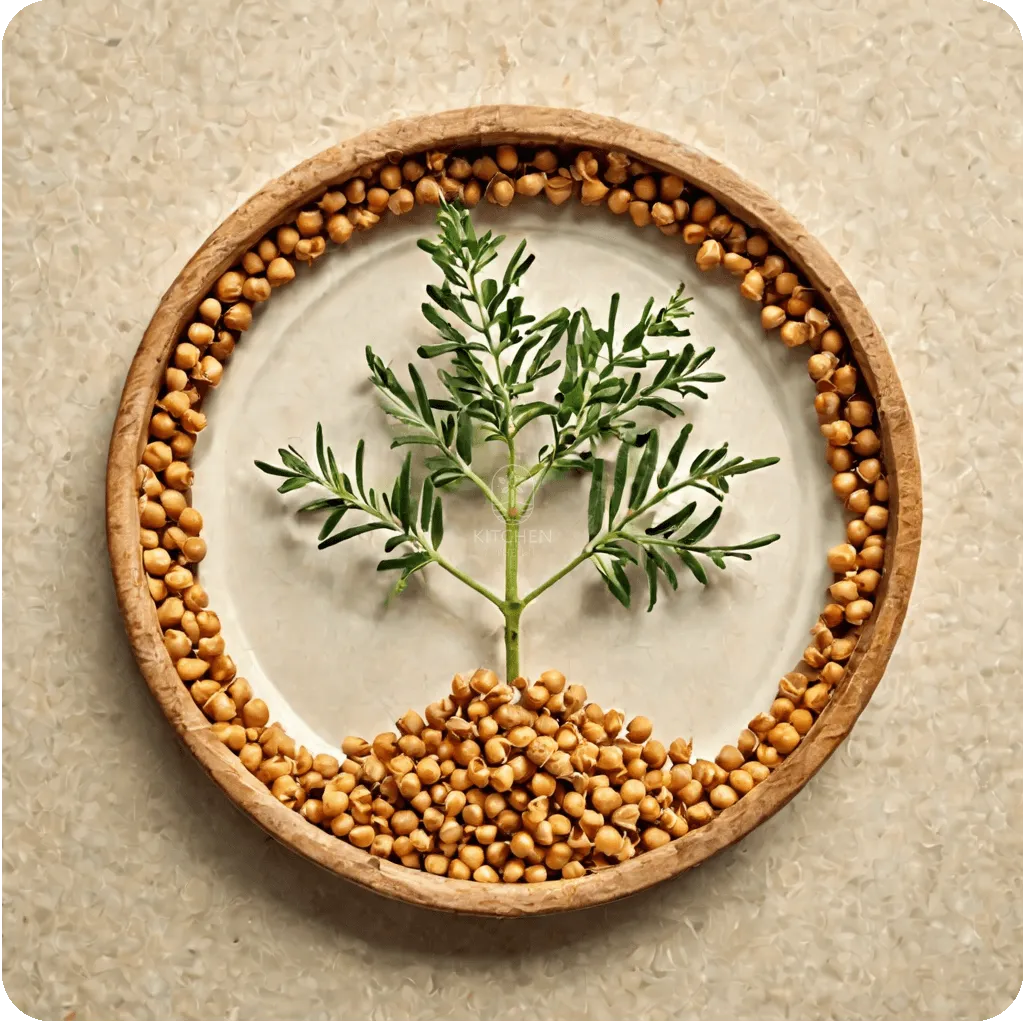
Chickpea Drawing
Credit Alberto Conde Kitchen in the Med
Pros
- High in Protein: They provide 14.5 grams of protein per cup of cooked chickpeas. They contain all essential amino acids except sulfur-containing ones.
- Rich in Fiber: They’re high in dietary fiber, which helps digestion, aids weight management, and may improve blood sugar control.
- Nutrient-Dense: Chickpeas contain essential vitamins and minerals, including folate, iron, magnesium, phosphorus, and B vitamins.
- Supports Heart Health: Studies show that chickpeas, due to their fiber and beneficial fatty acids, can help reduce LDL cholesterol levels.
- Versatile in Diets: They fit easily into various recipes and can serve as a meat substitute in vegan and vegetarian dishes.
- Affordable and Accessible: Chickpeas are widely available, shelf-stable, and inexpensive.
- They are great for cooking: Chickpeas have good emulsifying, foaming, and gelling properties.
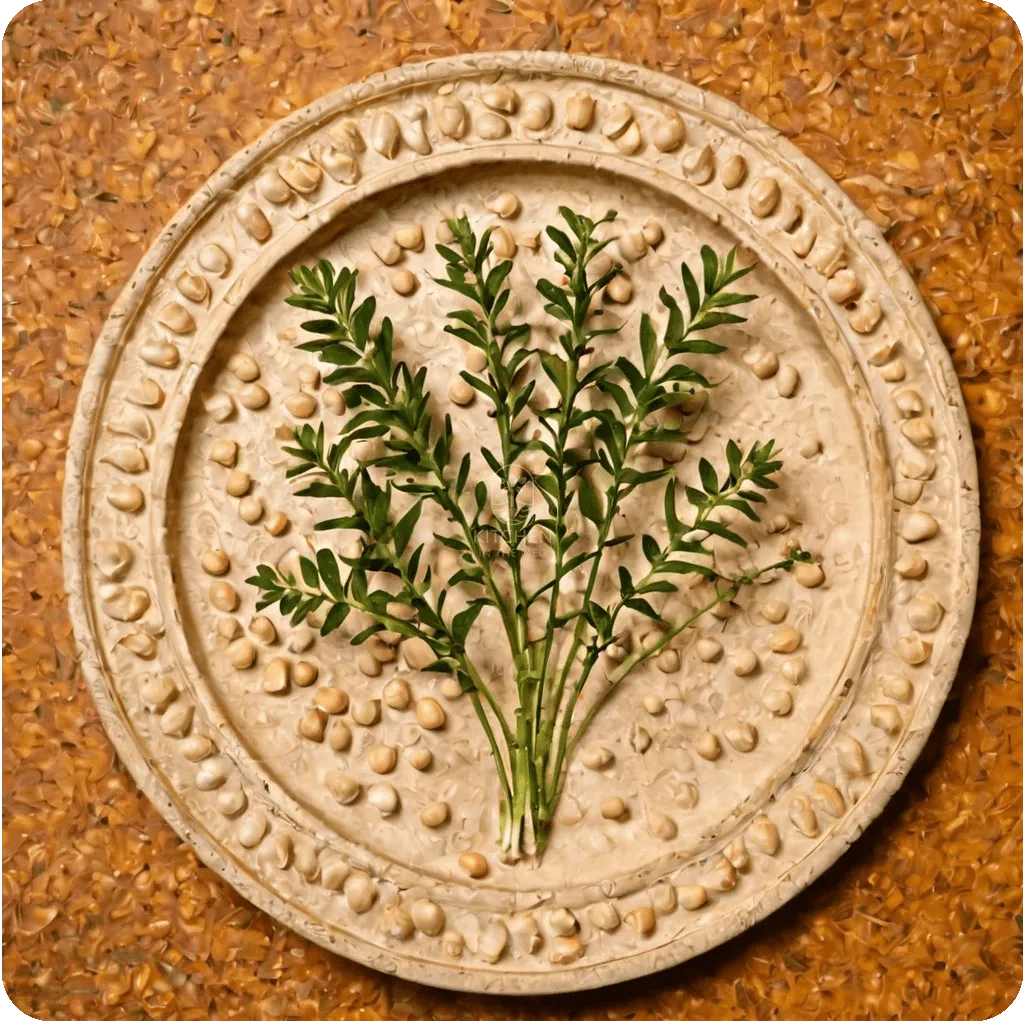
Chickpea Drawing
Credit Alberto Conde Kitchen in the Med
Cons
- Incomplete Protein: Chickpeas don’t have specific elementary amino acids (like methionine), making them an incomplete protein source. Combine them with grains, like rice or whole wheat, for a complete protein profile.
- Higher in Carbohydrates: Chickpeas have a notable amount of carbohydrates, which may be a consideration for those on low-carb diets.
- Gas and Digestive Issues: Chickpeas can cause bloating or gas in some individuals due to their fiber content and complex carbohydrates.
- Anti-Nutrients: Chickpeas contain compounds like phytic acid that can reduce mineral absorption. Proper preparation, such as soaking and cooking, can mitigate this.
- Calorie Dense: Chickpeas pack a lot of nutrients but are relatively calorie-dense, so people on a calorie-restricted diet may need to watch their portions.
Some great combinations to optimize the nutrition of chickpeas
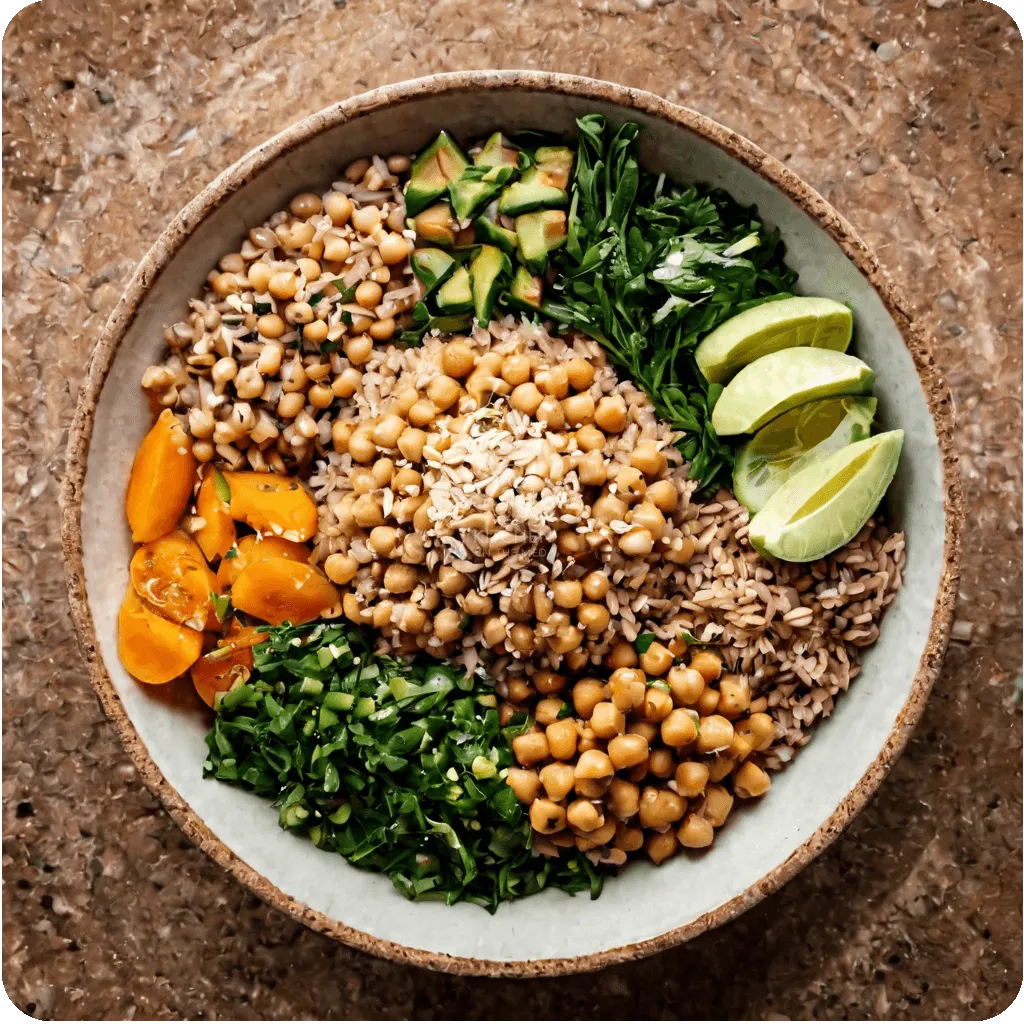
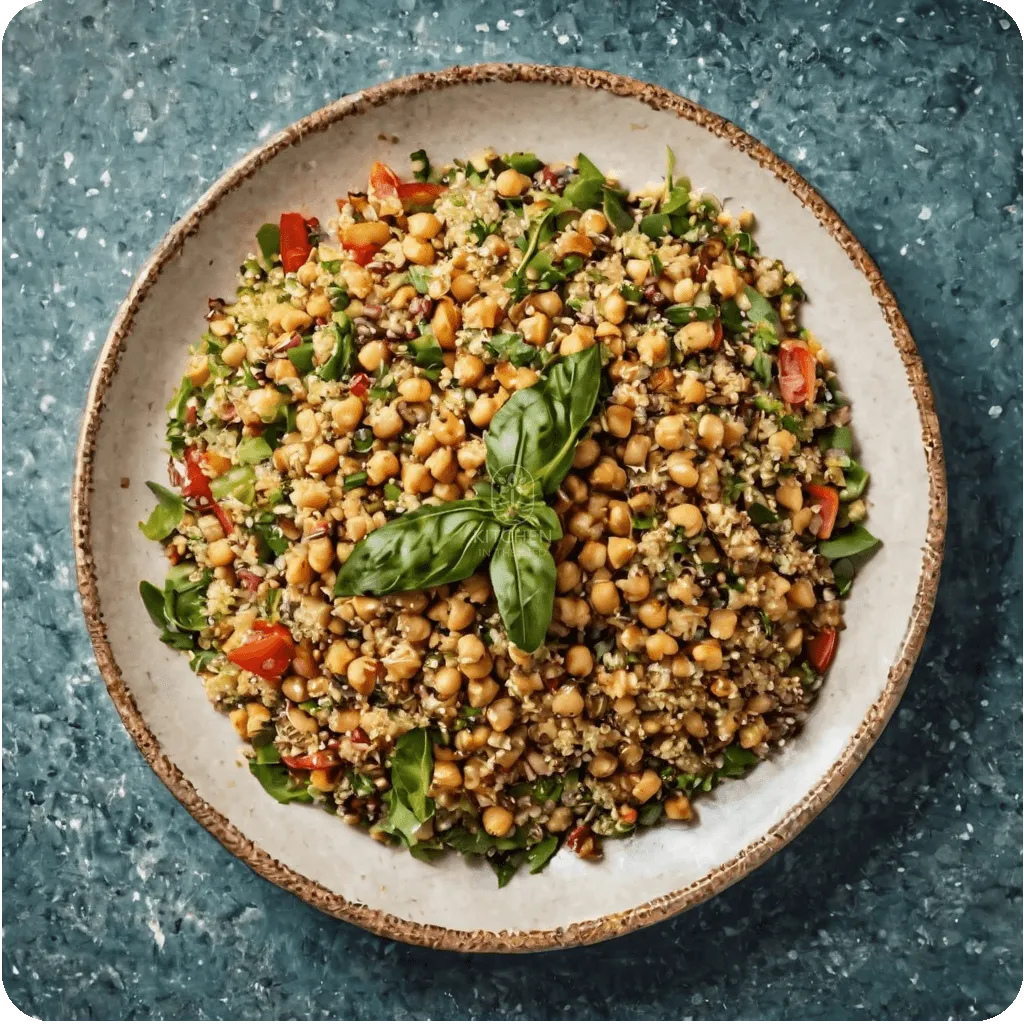
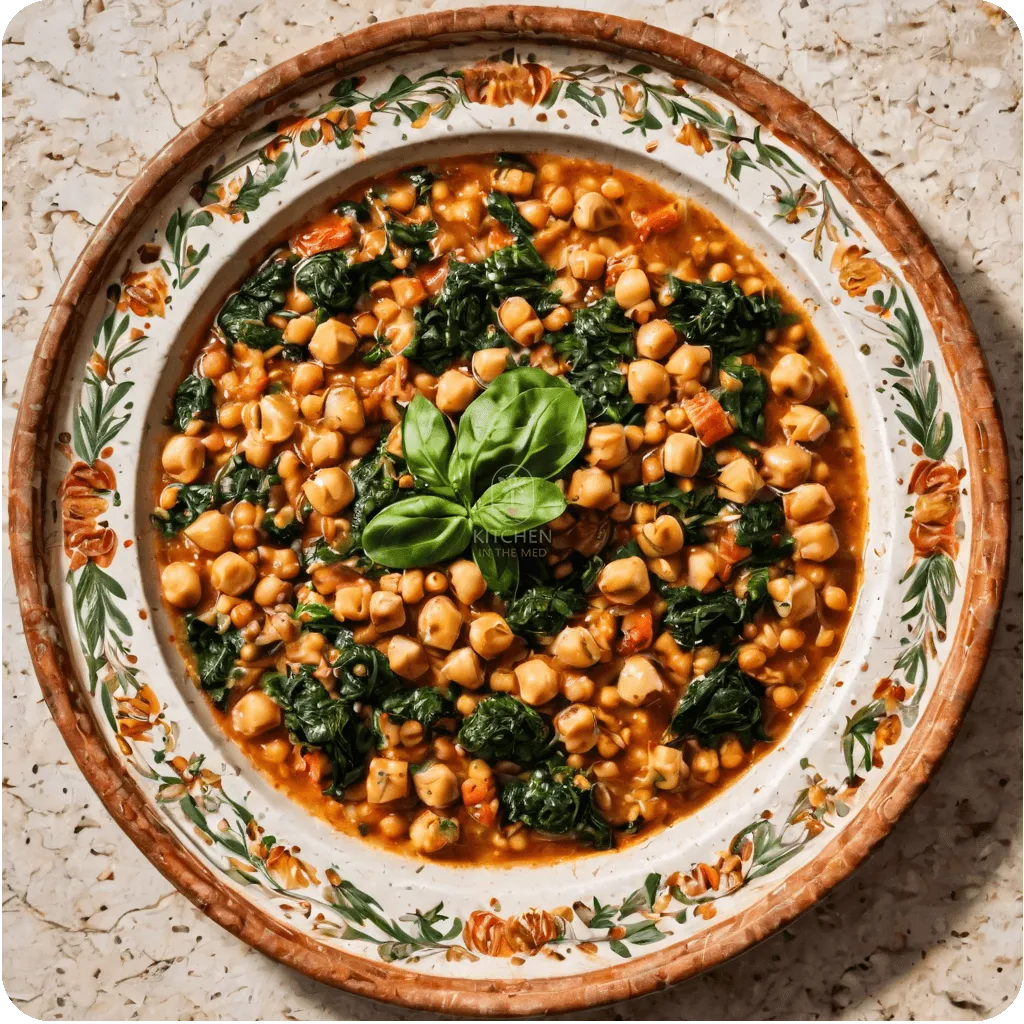
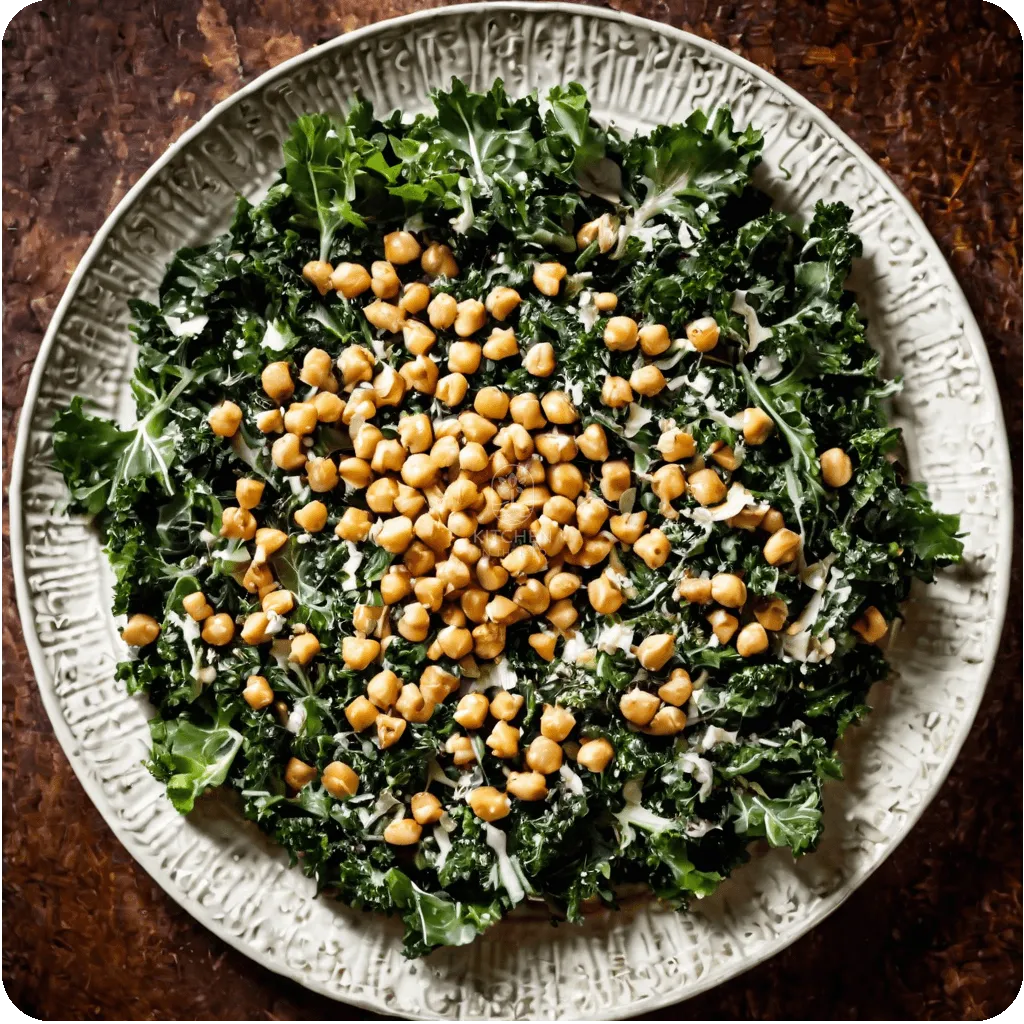
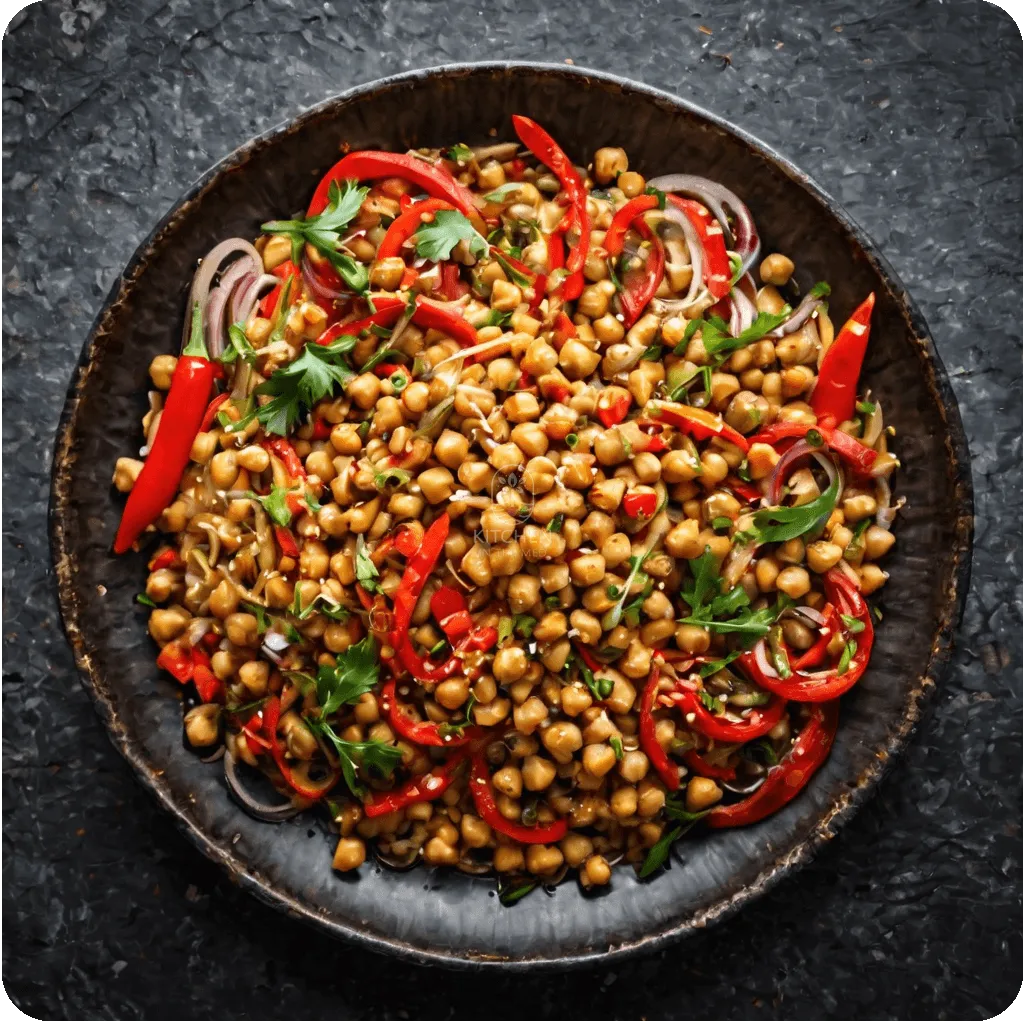
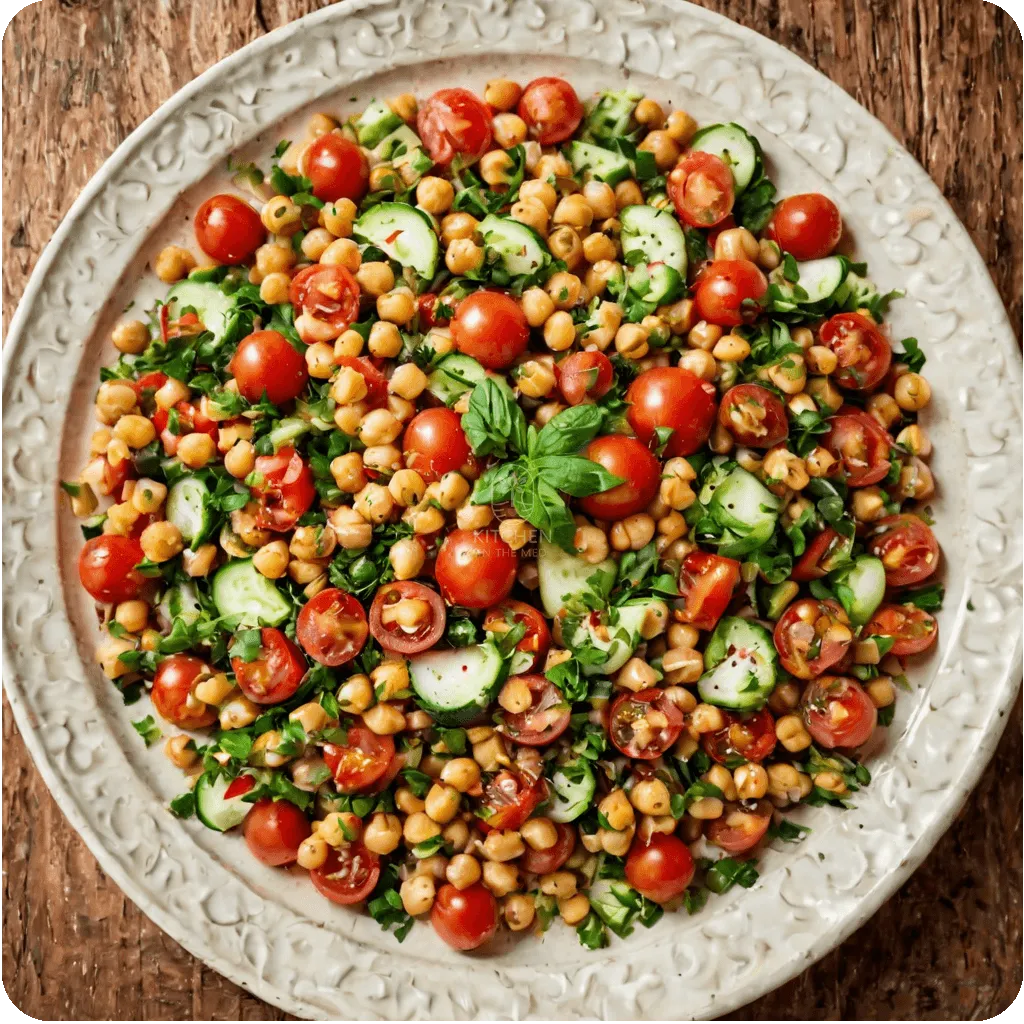
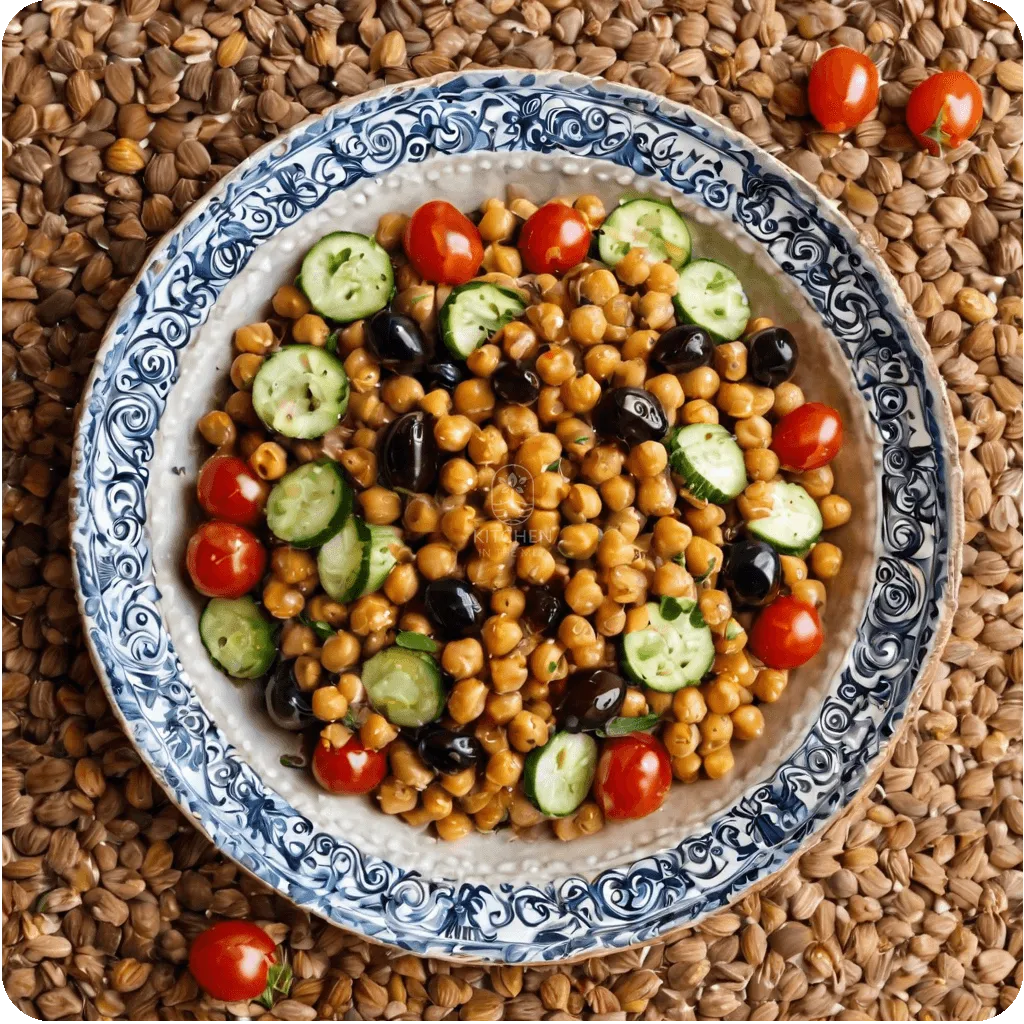
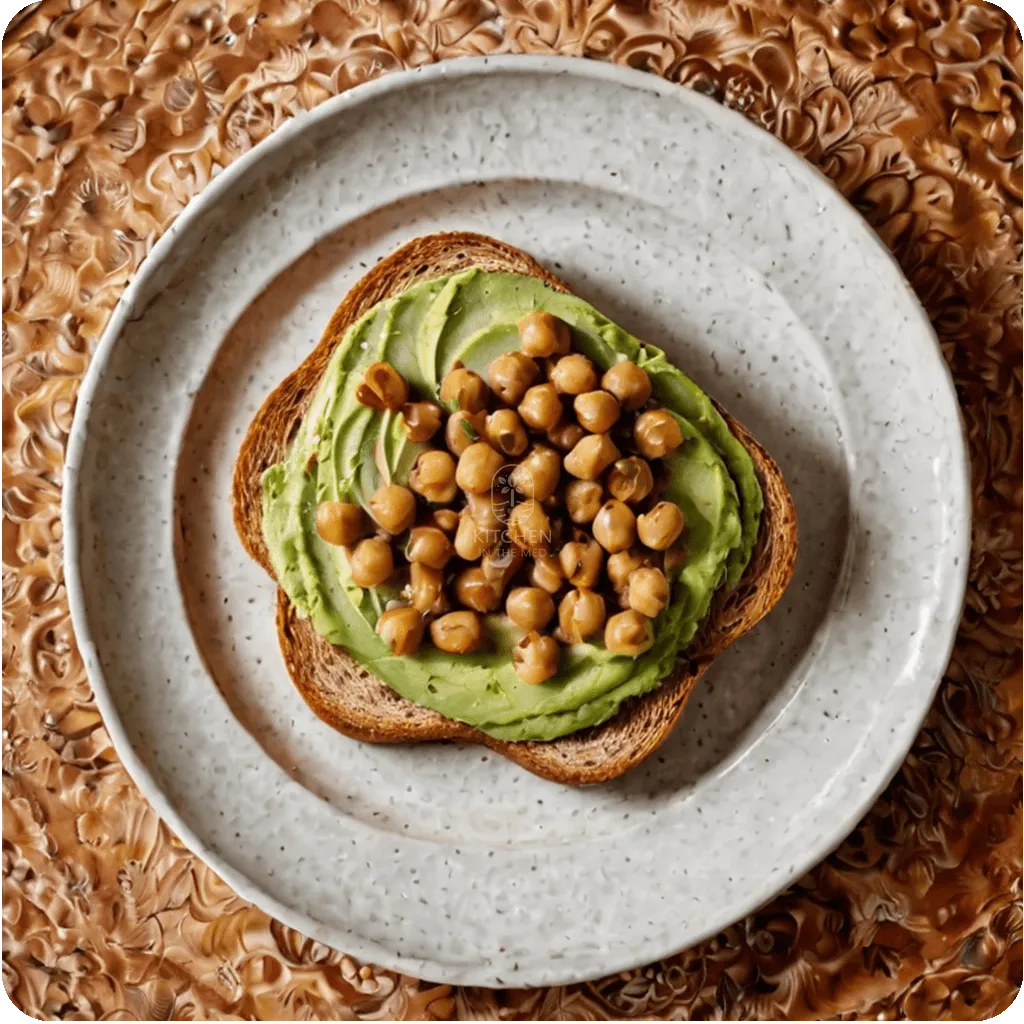

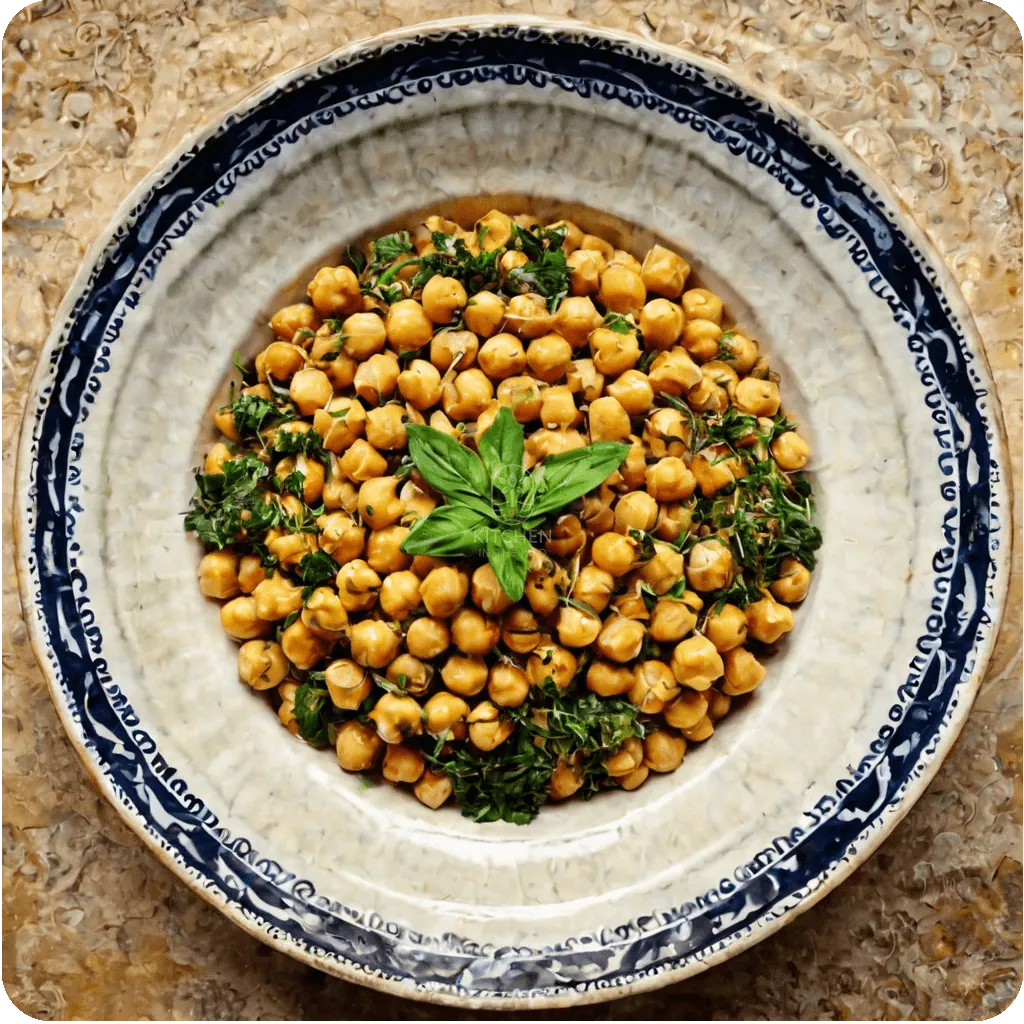
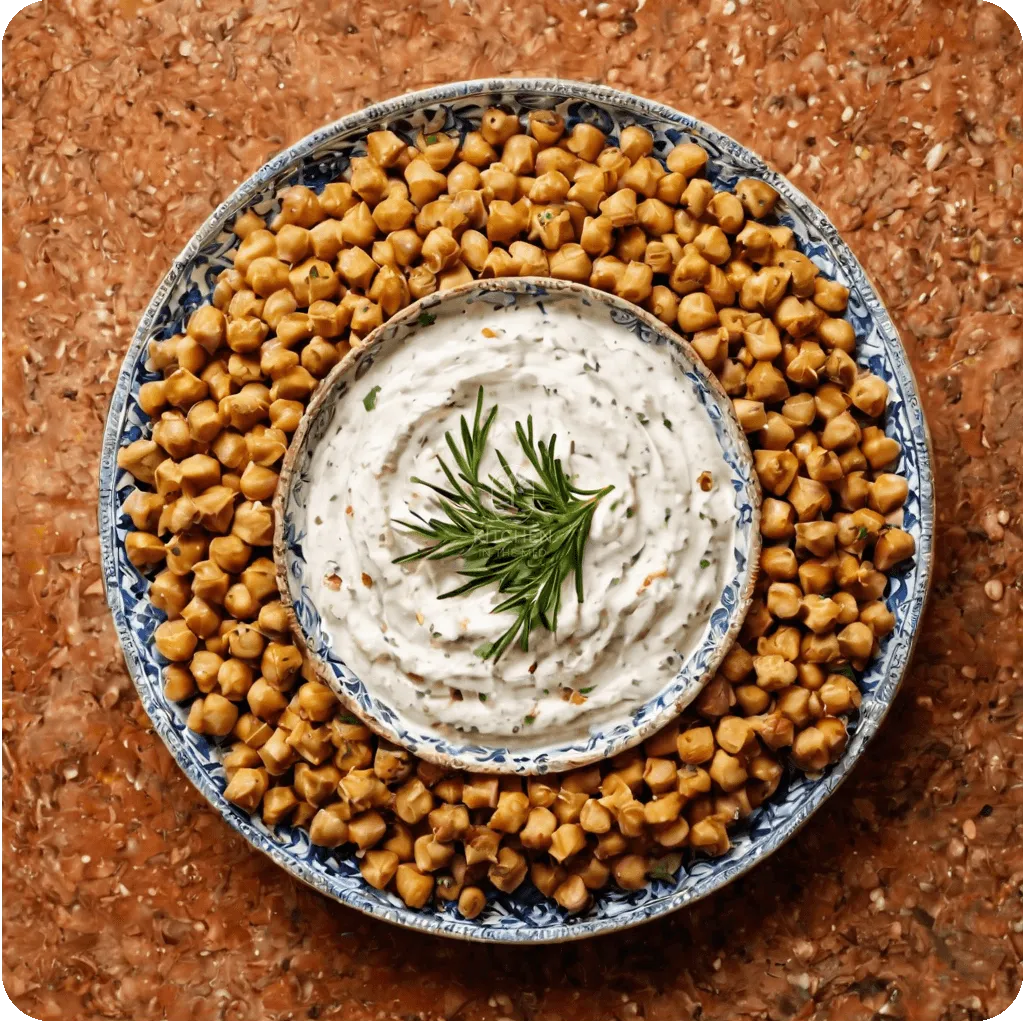

- Chickpeas + Whole Grains (Rice, Quinoa, or Whole Wheat)
- Why: Combining chickpeas with whole grains like rice, quinoa, or whole wheat completes the amino acid profile, providing all essential amino acids for a balanced protein.
- Examples:
- Chickpea and Brown Rice Buddha Bowl – Toss chickpeas with brown rice, roasted veggies, and a tahini dressing.
- Quinoa and Chickpea Salad – Mix cooked quinoa, chickpeas, diced cucumber, tomato, and a lemon vinaigrette.
- Chickpeas + Leafy Greens (Spinach, Kale)
- Why: Leafy greens have additional vitamin K, folate, and minerals (like iron and calcium), which complement the protein and fiber in chickpeas.
- Examples:
- Chickpea and Spinach Stew – Sauté chickpeas with garlic, spinach, tomatoes, and spices for a stew rich in nutrients.
- Kale and Chickpea Caesar Salad – Massage kale with a tahini-based Caesar dressing, then add roasted chickpeas for crunch.
- Chickpeas + Vitamin C-Rich Foods (Bell Peppers, Tomatoes, Citrus)
- Why: Vitamin C improves the absorption of the non-heme iron in chickpeas.
- Examples:
- Chickpea and Red Bell Pepper Stir-Fry – Sauté chickpeas with bell peppers and onions; add a squeeze of lemon juice for extra Vitamin C.
- Tomato and Chickpea Salad – Combine chickpeas with diced tomatoes, parsley, cucumber, and a citrusy vinaigrette.
- Chickpeas + Healthy Fats (Olive Oil, Avocado, Nuts)
- Why: Healthy fats enhance the absorption of fat-soluble vitamins (A, D, E, K) found in chickpeas and other ingredients.
- Examples:
- Mediterranean Chickpea Salad – Mix chickpeas with olives, cherry tomatoes, cucumber, and a generous drizzle of olive oil.
- Chickpea and Avocado Toast – Smash chickpeas and avocado together, season, and spread on whole-grain toast.
- Chickpeas + Herbs and Spices (Turmeric, Garlic, Cumin)
- Why: Some herbs and spices add antioxidants and anti-inflammatory properties.
- Examples:
- Curried Chickpeas – Cook chickpeas with garlic, turmeric, cumin, and coconut milk for a rich, and flavorful dish.
- Lemon and Herb Chickpea Bowl – Combine chickpeas with fresh herbs (like parsley and dill) and lemon zest for a very refreshing, antioxidant-rich dish.
- Chickpeas + Probiotic Foods (Yogurt, Sauerkraut)
- Why: Chickpeas provide prebiotic fiber that, when paired with probiotics, promote a healthy gut microbiome.
- Examples:
- Chickpea and Yogurt Dip – Blend chickpeas with Greek yogurt, lemon, and spices in a dip.
- Chickpea Salad with Sauerkraut – Add a scoop of sauerkraut to a chickpea salad to improve your gut health.
Common Chickpea Myths

Chickpea Drawing
Credit Alberto Conde Kitchen in the Med
Myth: Chickpeas are a complete protein.
- Fact: Chickpeas lack certain essential amino acids, such as methionine, making them an incomplete protein. Combining them with grains like rice or whole wheat can provide a complete amino acid profile.
Myth: Eating chickpeas causes significant weight gain.
- Fact: Chickpeas are nutrient-dense and high in fiber, boosting satiety and helping manage weight when consumed in moderation.
Myth: Canned chickpeas are less nutritious than dried ones.
- Fact: Canned chickpeas retain most of their nutrients. However, they may contain added sodium; rinsing them can reduce sodium content.
Myth: Chickpeas are hard to digest.
- Fact: Some people may experience gas due to oligosaccharides in chickpeas. Proper soaking and cooking can reduce these compounds, making them easier to digest.
Myth: Chickpeas are high in fat.
- Fact: Chickpeas are low in fat, with most of it being unsaturated, which is beneficial for heart health.
Sources I used in this Article
British Journal of Nutrition, Cambridge University Press
Nutritional quality and health benefits of chickpea (Cicer arietinum L.): a review
Harvard School of Public Health, The Nutrition Source
Tufts University, Perseus
Pliny the Elder, The Natural History
John Bostock, M.D., F.R.S., H.T. Riley, Esq., B.A., Ed.
University of Rochester Medical Center, Health Encyclopedia
Origin, History and Taxonomy of Chickpea
Origin, History and Taxonomy of Chickpea by L.J.G. Van der Maesen
Chickpea protein ingredients: A review of composition, functionality, and applications
Nutritional quality and health benefits of chickpea (Cicer arietinum L.): a review
Pliny the Elder, The Natural History
John Bostock, M.D., F.R.S., H.T. Riley, Esq., B.A., Ed.
Origin, History and Taxonomy of Chickpea by L.J.G. Van der Maesen
Share this article
[elementor-template id=”5498″]